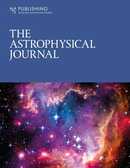Accepted paper at Astrophysical Journal
Prediction and understanding of soft proton contamination in XMM-Newton: a machine learning approach
08.10.2020
Authors
Elena A. Kronberg, Fabio Gastaldello, Stein Haaland, Anton Smirnov, Max Berrendorf, Simona Ghizzardi, K. D. Kuntz, Nithin Sivadas, R. C. Allen, Andrea Tiengo, Raluca Ilie, Yun-Hsin Huang, Lynn Kistler
Abstract
One of the major and unfortunately unforeseen sources of background for the current generation of X-ray telescopes are few tens to hundreds of keV (soft) protons concentrated by the mirrors. One such telescope is the European Space Agency's (ESA) X-ray Multi-Mirror Mission (XMM-Newton). Its observing time lost due to background contamination is about 40%. This loss of observing time affects all the major broad science goals of this observatory, ranging from cosmology to astrophysics of neutron stars and black holes. The soft proton background could dramatically impact future large X-ray missions such as the ESA planned Athena mission (http://www.the-athena-x-ray-observatory.eu/). Physical processes that trigger this background are still poorly understood. We use a Machine Learning (ML) approach to delineate related important parameters and to develop a model to predict the background contamination using 12 years of XMM observations. As predictors we use the location of satellite, solar and geomagnetic activity parameters. We revealed that the contamination is most strongly related to the distance in southern direction, Z, (XMM observations were in the southern hemisphere), the solar wind radial velocity and the location on the magnetospheric magnetic field lines. We derived simple empirical models for the first two individual predictors and an ML model which utilizes an ensemble of the predictors (Extra Trees Regressor) and gives better performance. Based on our analysis, future missions should minimize observations during times associated with high solar wind speed and avoid closed magnetic field lines, especially at the dusk flank region in the southern hemisphere. preprint at arXiv


